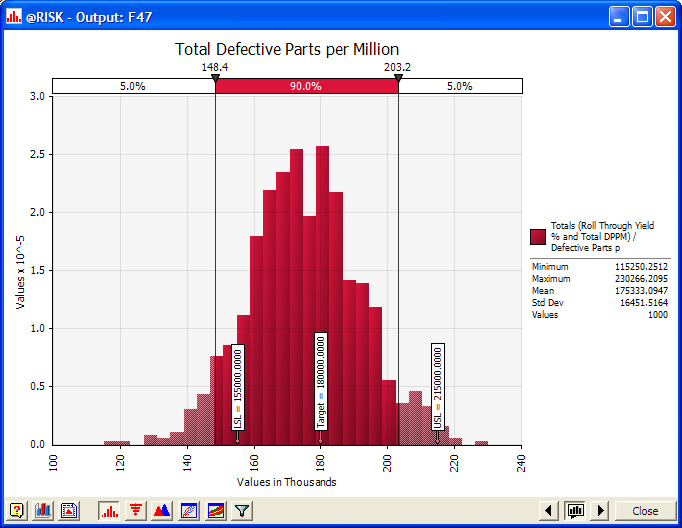
Six Sigma


Six Sigma is a business management strategy, originally developed by Motorola in 1986.
Six Sigma became well known after Jack Welch made it a central focus of his business strategy
at General Electric in 1995, and today it is widely used in many sectors of industry.

The term Six Sigma originated from terminology associated with manufacturing, specifically terms
associated with statistical modeling of manufacturing processes. The maturity of a manufacturing
process can be described by a sigma rating indicating its yield or the percentage of defect-free products it creates.
 Six Sigma seeks to improve the quality of process outputs by identifying and removing the causes
of defects (errors) and minimizing variability in manufacturing and business processes. It uses a set
of quality management methods, including statistical methods, and creates a special infrastructure of
people within the organization ("Black Belts", "Green Belts", etc.) who are experts in these methods.
Six Sigma seeks to improve the quality of process outputs by identifying and removing the causes
of defects (errors) and minimizing variability in manufacturing and business processes. It uses a set
of quality management methods, including statistical methods, and creates a special infrastructure of
people within the organization ("Black Belts", "Green Belts", etc.) who are experts in these methods.
 Organizational improvements requiring significant efforts are handled through projects. Each Six
Sigma project follows a specific sequence of steps and has quantified financial targets (cost reduction
and/or revenue increase, resulting in increase of profit). The standard sic sigma project model is the
DMAIC divided into the following phases: DEFINE, MEASURE, ANALYZE, IMPROVE and CONTROL. The project cannot
proceed to subsquent phases until the present phase has satisfied phase requirements.
Organizational improvements requiring significant efforts are handled through projects. Each Six
Sigma project follows a specific sequence of steps and has quantified financial targets (cost reduction
and/or revenue increase, resulting in increase of profit). The standard sic sigma project model is the
DMAIC divided into the following phases: DEFINE, MEASURE, ANALYZE, IMPROVE and CONTROL. The project cannot
proceed to subsquent phases until the present phase has satisfied phase requirements.
 A six sigma process is one in which 99.99966% of the products manufactured are statistically expected
to be free of defects (3.4 defects per million). Motorola set a goal of "six sigma" for all of its manufacturing
operations, and this goal became a byword for the management and engineering practices used to achieve it.
A six sigma process is one in which 99.99966% of the products manufactured are statistically expected
to be free of defects (3.4 defects per million). Motorola set a goal of "six sigma" for all of its manufacturing
operations, and this goal became a byword for the management and engineering practices used to achieve it.